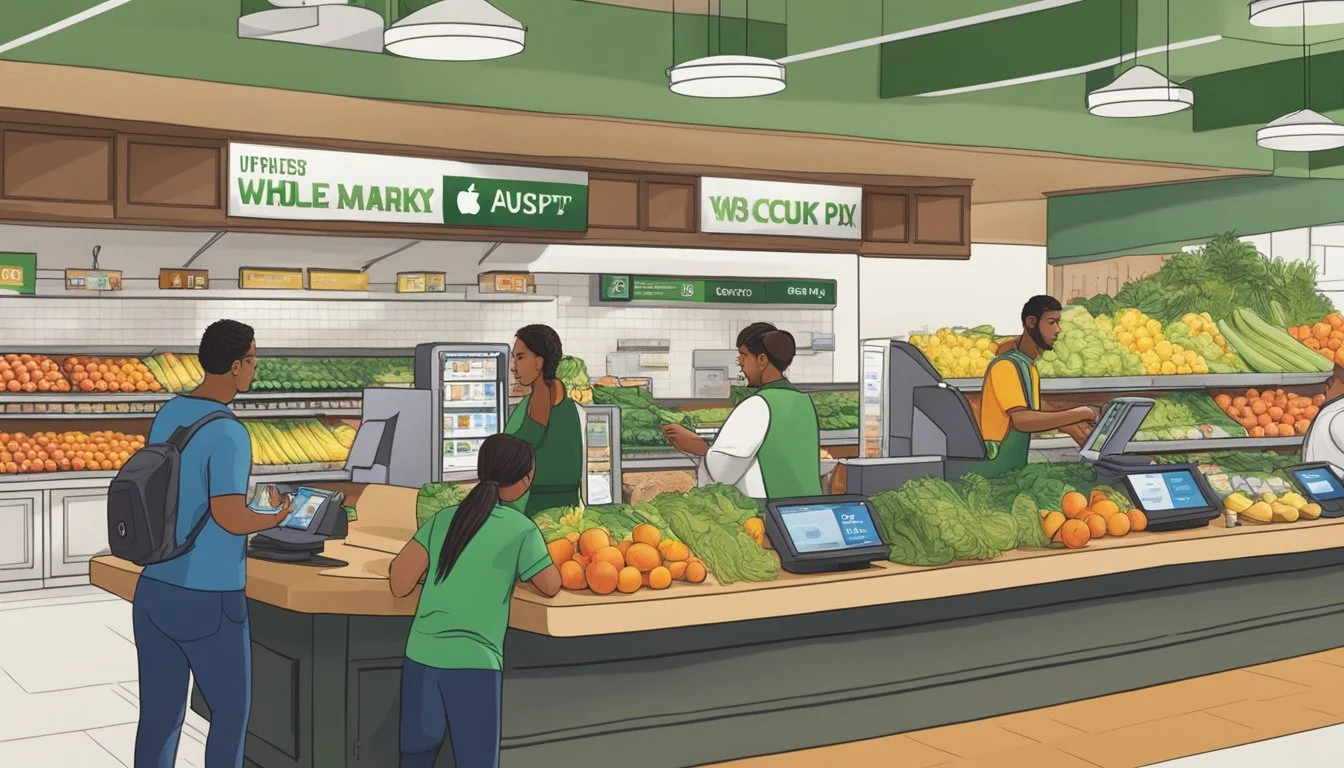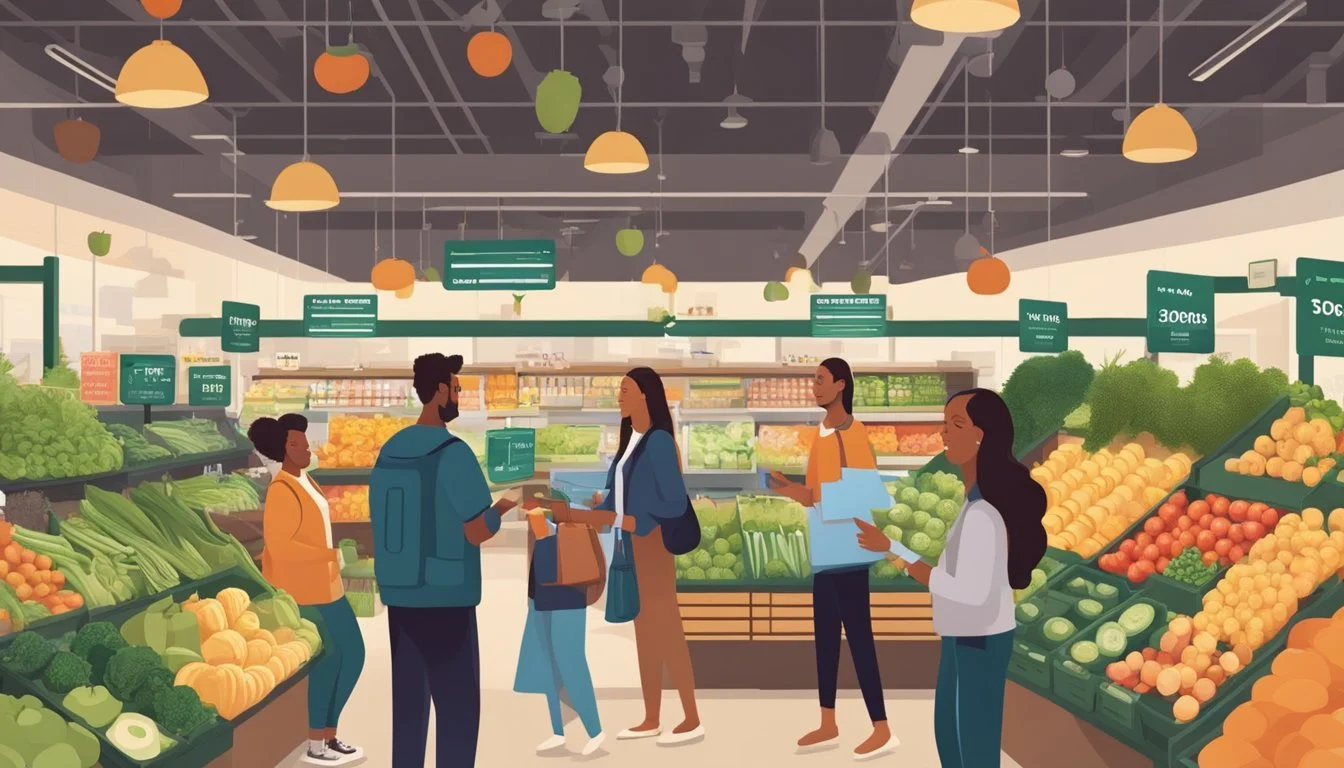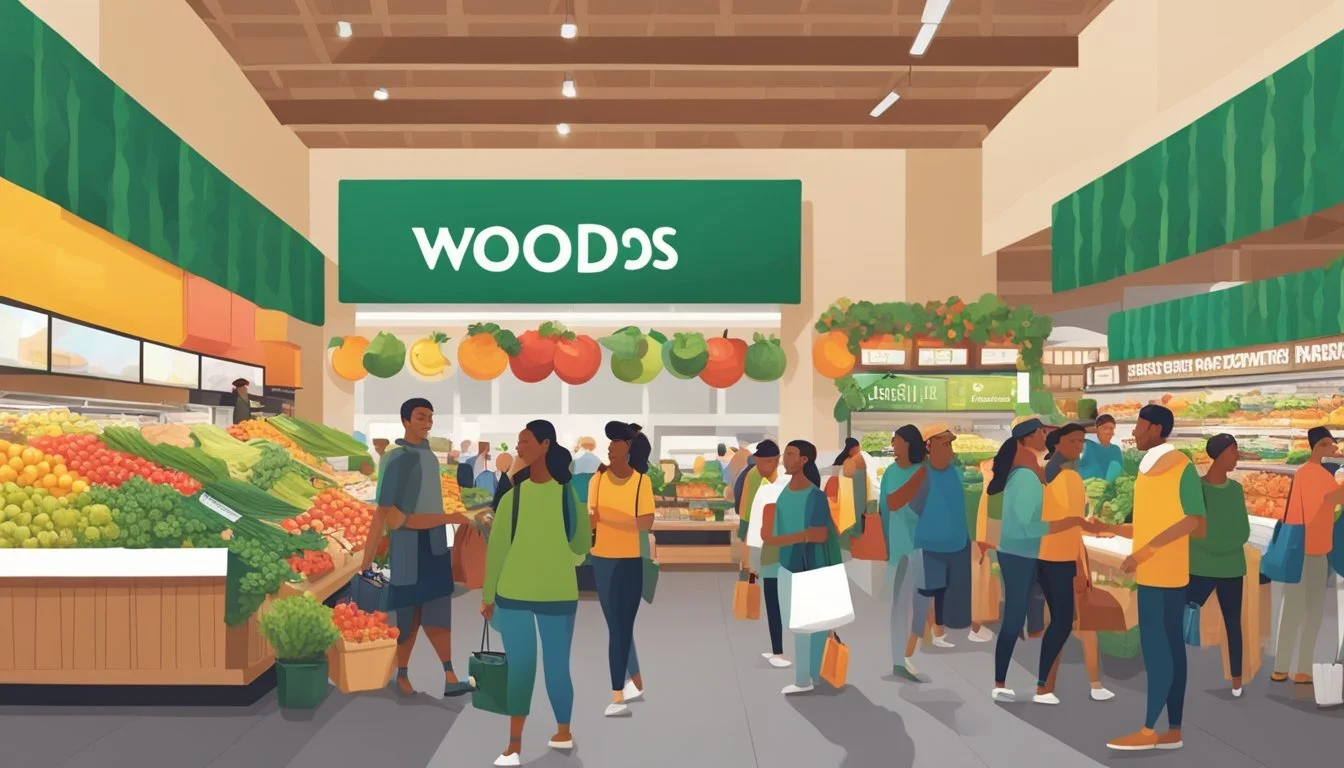Does Whole Foods Market Take Apple Pay?
Payment Options Explained
For those wondering whether Whole Foods Market accepts Apple Pay, the answer is a resounding yes. Whole Foods Market provides shoppers with the convenience of completing transactions using Apple Pay, making grocery shopping faster and more efficient. The integration of this technology aligns with the store's commitment to enhancing the shopping experience through modern payment methods.
Adopting Apple Pay aligns with the growing trend of contactless payments. Shoppers at Whole Foods can enjoy the ease and security that comes with using Apple Pay. This form of payment not only streamlines the checkout process but also offers a hygienic option for those concerned with physical contact.
The Dash Cart feature at Whole Foods also supports Apple Pay, allowing customers to scan and bag items as they shop and then simply exit through the Dash Cart lane. This further demonstrates Whole Foods Market's dedication to leveraging technology to improve grocery shopping convenience.
Compatibility and Setup
Whole Foods Market accepts Apple Pay, providing a convenient and secure payment method. This section outlines the compatibility of devices with Apple Pay and guides on setting up the service.
Supported Devices
Apple Pay works on various Apple devices. iPhone models with Face ID or Touch ID support Apple Pay. This includes iPhone SE, iPhone 6 and later models. The Apple Watch Series 1 and newer are also compatible.
For tablets, iPad devices that run on iOS 10 and later can use Apple Pay. This includes iPad Pro, iPad Air 2, and iPad mini 3 and newer. Apple Pay is further supported on Macs with Touch ID or when used in conjunction with an iPhone or Apple Watch.
How to Set Up Apple Pay
To set up Apple Pay, first open the Wallet App on your compatible device. Tap the “+” icon to add a new card. You can add Credit Cards and Debit Cards by manually entering the card details or scanning the card using your device’s camera.
Once the card info is submitted, your bank or card issuer will verify the information and decide whether to approve the card for use with Apple Pay. Upon approval, Apple Pay setup is complete. Confirm the setup by ensuring that the card appears in the Wallet App.
Using Apple Pay at Whole Foods Market
Using Apple Pay at Whole Foods Market offers a seamless and secure payment experience. It allows shoppers to complete transactions quickly and conveniently, contributing to an efficient shopping trip.
Making a Payment
To make a payment with Apple Pay at Whole Foods Market, customers need to look for the NFC-enabled card reader at the checkout. The Apple Pay logo will be prominently displayed, signaling that the service is accepted.
First, add items to your cart and proceed to the cashier or self-checkout lane. When ready to pay, hold your iPhone or Apple Watch near the contactless reader with your finger on Touch ID or by double-clicking the side button on devices with Face ID. A gentle vibration and a beep will confirm that the transaction is complete. This straightforward process makes for an efficient checkout experience.
Benefits of Using Apple Pay
Apple Pay provides numerous benefits for customers shopping at Whole Foods Market. The foremost advantage is security. Apple Pay uses a device-specific number and unique transaction code, meaning your actual card details are never shared with merchants or stored on your device. This ensures a high level of protection against fraud.
The convenience is another key benefit. With Apple Pay, there’s no need to carry physical cards or cash. Customers can complete transactions quickly by simply tapping their device, reducing time spent at the checkout. Additionally, Apple Pay integrates seamlessly with other features of Whole Foods' shopping experience, such as the Dash Cart, which lets you scan and bag items as you shop.
This streamlined, secure, and contactless method aligns with modern consumer preferences, enhancing the overall shopping experience at Whole Foods Market.
Financial Considerations
When shopping at Whole Foods Market, it's important to know which payment methods are accepted and how you can maximize savings, particularly if you're an Amazon Prime member.
Accepted Payment Methods
Whole Foods Market accepts a variety of payment options to accommodate different customer preferences. Shoppers can use Apple Pay for convenient and secure transactions via their iPhones or Apple Watches. Other digital payment methods such as Amazon Pay are also accepted, especially useful for frequent Amazon shoppers.
In addition to digital wallets, Whole Foods accepts traditional payment methods. These include Credit Cards and Debit Cards such as Visa, MasterCard, and American Express. Customers can also pay using Cash or Gift Cards, providing flexibility for in-store transactions.
Rewards and Prime Savings
Amazon Prime members enjoy exclusive benefits at Whole Foods Market. Prime Savings offer discounts on select products, often indicated with special in-store signage. By linking their Amazon Prime account, customers can access these deals directly at checkout.
Whole Foods also provides various rewards programs. Shoppers receive additional benefits by using Amazon One, a payment and identification service that enables a fast and contactless shopping experience. These programs are designed to enhance savings and streamline the shopping process for loyal customers.
Shopping Experience at Whole Foods
Whole Foods Market offers a unique shopping experience with its focus on local and organic offerings and various special services that cater to shoppers' diverse needs.
Local and Organic Offerings
Whole Foods is renowned for its commitment to organic and locally sourced products. Shoppers can find a range of fresh produce, such as locally grown tomatoes and organic kale, often supplied by local artisans and producers. In addition, Whole Foods' 365 store-brand items provide affordable organic options, making it easier for customers to nourish themselves with quality, healthy foods without breaking the bank.
Local brands available at Whole Foods extend beyond fresh produce. From local bakers and cheese makers to artisans creating unique foods, the emphasis on supporting local entrepreneurs is evident. These items are not just limited to groceries; Whole Foods also features local products like Twinings English Breakfast Tea and Tropicana Orange Juice, which enrich the variety available to shoppers.
Special Services
Whole Foods enhances the shopping experience with an array of special services designed to improve convenience. The Dash Cart allows customers to skip checkout lanes by scanning items and bagging them while they shop, then simply exiting through a designated lane. This streamlines the shopping trip and reduces wait times.
Whole Foods also offers delivery services through partnerships with companies like Deliveroo, allowing customers to have their groceries delivered straight to their doorstep. This is particularly useful for busy individuals or those who prefer shopping from the comfort of their home.
In select locations like the Piccadilly Store, Whole Foods has incorporated unique offerings such as pizza and salad bars where shoppers can grab a quick and healthy meal. These in-store dining options enhance the convenience and appeal of shopping at Whole Foods, making it a one-stop shop for both groceries and meals.
Beyond Whole Foods Market
Apple Pay's adoption is widespread across many major retailers in America, providing a convenient, contactless payment solution. This section explores other retailers supporting Apple Pay, highlighting its presence in the US market.
Other Retailers Supporting Apple Pay
Numerous major retailers and grocery stores in America accept Apple Pay, making it a widely accessible payment option. Target and Costco are among the big box stores that support Apple Pay, allowing seamless transactions.
Grocery chains such as Albertsons, Acme Markets, Publix, Trader Joe’s, and Wegmans also accept Apple Pay, ensuring shoppers can enjoy quick, contactless payments.
Pharmacy chains like CVS and Walgreens have adopted Apple Pay, enhancing convenience for quick and easy checkouts.
Other well-known retailers that support Apple Pay include Aldi, Family Dollar, and Meijer. This broad acceptance across various retail segments demonstrates Apple Pay's integration into everyday shopping experiences.
Apple Pay in America
In the United States, Apple Pay has significantly changed how consumers approach payments. This contactless payment method is supported by a wide range of establishments, ensuring that users can easily pay with their iPhones or Apple Watches.
The transition to contactless payments has been bolstered by retailers such as Hy-Vee, Kroger (via Kroger Pay), Raley’s, Safeway, and Schnucks. These stores offer customers a more hygienic and quick way to make payments.
With the integration of Apple Pay into many national chains and local stores, including Jewel-Osco, Bi-Lo, Winn-Dixie, Hornbacher’s, Cub Foods, and Foodmaxx, consumers have a wide array of options when shopping using Apple Pay.
Retailers' adoption of Apple Pay showcases the shift toward digital, contactless payment solutions, reflecting broader trends in consumer behavior in America. This adoption has been critical in making shopping more efficient and secure.
Cultural and Seasonal Events
Whole Foods Market offers a range of cultural and seasonal events that cater to diverse customer interests. Key activities include seasonal promotions and themed product offerings.
Seasonal Promotions
During the summer, Whole Foods Market launches Summer Savings events, ideal for those planning picnics. They feature grilling essentials and cocktail cans to elevate outdoor gatherings.
Other promotions include Limited-Time-Only Savings on select items like Dove's Farm Gluten Free Plain Flour and Yeo Valley Organic Salted Butter. Products like Oatly Oat Drink Barista Edition and Pollen + Grace Indian Spiced Bombay Potato Grain Bowl often make appearances on the seasonal promotion list.
Specialty items such as Dillon Original Flaxseed Keto Bread and Wild Dose A Dose for Bloating 20 Caps also enjoy discounted rates, encouraging healthier lifestyles while celebrating seasonal events.
Product Standards and Quality
Whole Foods Market maintains stringent standards to ensure their products are both healthy and sustainable.
Health and Sustainability
Whole Foods Market emphasizes quality food standards that forbid over 550 ingredients often found in other stores. This includes prohibiting artificial preservatives, sweeteners, and synthetic colors. Their commitment to organic products ensures minimal use of harmful chemicals.
They source sustainable wild-caught seafood and emphasize animal welfare in their meat products. For instance, the meat department requires suppliers to follow strict animal welfare practices. This means customers can be assured of responsibly sourced options, whether opting for fresh beef, pork, or poultry.
Additionally, Whole Foods’ dedication to health extends to body care and household cleaning products, reflecting their comprehensive approach to quality and sustainability. Their rigorous standards resonate with consumers prioritizing health and environmental impacts.






